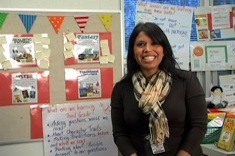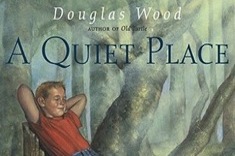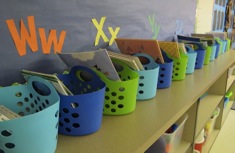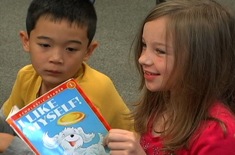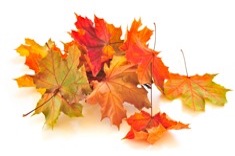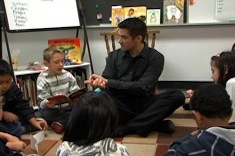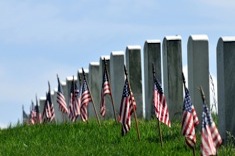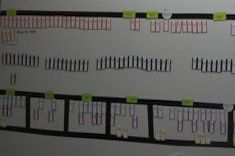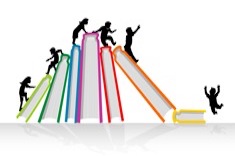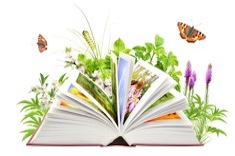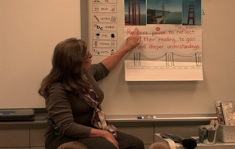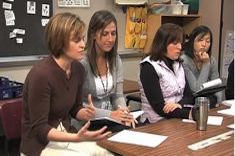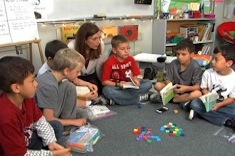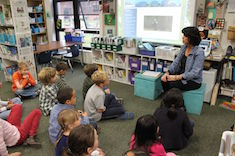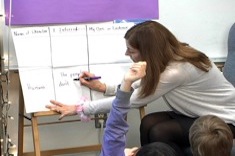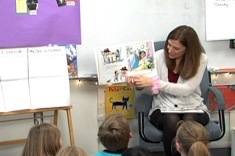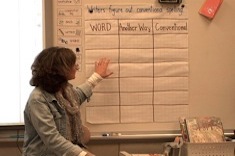2nd
Latest Content
A Classroom for Elementary English Language Learners
Stella Villalba gives a tour of her classroom library and publishing corner designed to support the grades 1-5 English language learners she works with daily.
A Strong Foundation: Books and Media for Launching Literacy Workshops
Help students transition back to school with minilessons that give children a strong sense of the purpose of literacy workshops.
Effective Organization
Ruth Ayres has tips for organizing desks, tables, chairs, and materials to support literacy learning.
Second-Grade Reading Share
Sean Moore leads a second-grade whole-class reading share early in the year. This quick video shows that this instruction time is as much about establishing social norms as talking about reading.
Launching a Sort
Launching a sort with primary students early in the year begins not with words, but with leaves for Max Brand.
Launching Reading Workshop: Mentor Texts
Mandy Robek shares her favorite texts to use early in the year with young students to introduce them to everything from places to read to how to handle books.
Sticky Notes Small Group
Sean Moore meets with a group of second graders to remind them how to use sticky notes strategically while they are reading.
Endings Minilesson with Second Graders
Cathy Laker uses her own writing as a mentor text with her second-grade students to demonstrate options for endings.
A Booklist for Memorial Day
Sarah Klim’s latest booklist includes titles for honoring those who serve on Memorial Day.
The Data Wall Debacle
Shari Frost has a suggestion for what shouldn’t be on classroom walls: student assessment scores. She explains why this practice can be harmful to students.
Understanding the Summer Slide: Sharing Data with Parents and Students
Clare Landrigan and Tammy Mulligan explain why it is important to share data with parents while school is still in session in order to avoid the summer slide. This is another installment in their summer reading series.
Mental Images: Connecting Reading and Sketching
Sean Moore confers with second grader Teague, masterfully demonstrating how to move between instruction and celebration when conferring with a child who struggles with reading.
Getting Ready for Summer Reading: A Lesson Cycle
Franki Sibberson designs a lesson cycle to prepare students for summer reading.
Reading Through Spring
Gigi McAllister has many suggestions for a strong reading finish to the school year.
Connecting Nonfiction Reading and Writing: Conferring with Hermione
Stella Villalba confers with Hermione, a first grader who is also an English language learner. Hermione is combining research and writing as she writes a nonfiction report.
Celebrating Screen-Free Week (BOOKLIST)
Screen-Free Week is scheduled for May 5-11 this year. Here are some book suggestions to help you explore the issue with students.
A Booklist for Earth Day
Earth Day is celebrated on April 22. Sarah Klim presents some favorite titles to share with students and build awareness in this booklist.
Conferring About Word Learning
Sean Moore teaches second grader Mikhail some strategies for learning words in a conference.
Word Observations
Max Brand describes how word observations can work as powerful minilessons in elementary classrooms.
Bridge to Comprehension Minilesson
Deb Gaby uses a bridge metaphor in a comprehension minilesson for second graders.
Simplifying Word Study
Max Brand has suggestions for simplifying word study.
Drama and Two-Page Spreads: Conferring with Max
Ruth Ayres confers with second grader Max about the drama of losing his dog, and the value of using two-page spreads to tell a story.
Sentence Combining in Workshops
Heather Rader has strategies for using sentence combining in literacy workshops.
Conversational Skills in a Boys Book Club
Linda Karamatic observes a second-grade boys book club using tokens as a cue for turn taking, and then discusses her observations with the students.
Children’s Literature for the Olympics
The Olympics are just around the corner, and Sarah Klim has suggestions for read alouds in a new booklist.
Jennifer Serravallo on Formative Assessment (PODCAST)
Franki Sibberson chats with Jennifer Serravallo about formative assessment in this podcast. Jennifer is the author of The Literacy Teacher’s Playbook, Grades 3-6: Four Steps for Turning Assessment Data into Goal-Directed Instruction.
Formative Spelling Assessment
Max Brand has developed templates for grades K-2 and 3-5 to use for formative spelling assessments.
Rereading and Retelling to Inferring: Part 2
Linda Karamatic uses texts her second graders already know to build their inferring skills as they construct a chart together.
Exploring Inferring with Second Graders: Part 1
Linda Karamatic uses a read aloud to launch a group activity to build understanding of inferring.
Words Chart Minilesson
Ruth Ayres develops a word chart in this brief minilesson with second graders.
Browse Content By
Type
Category
- Assessment Tools
- Big Fresh Archives
- Booklists
- Choice Numeracy
- Classroom Design
- Common Core
- Community Building
- Conferring
- Content Literacy
- Digital Literacy
- English Language Learners
- Equity
- Family Relations
- Free Samples
- Guiding Groups
- Leadership
- Literacy Coaches
- Mentor Texts
- Minilessons
- New Teacher Mentors
- Podcasts
- Poetry
- Quote Collections
- Reading Strategies
- Self Care
- Struggling and Striving Learners
- Talking and Listening
- Teacher Study Groups
- Teaching Reading
- Teaching Writing
- Word Study and Vocabulary
Author
- Melissa Quimby
- Nawal Qarooni
- Gwen Blumberg
- Julie Cox
- The Lead Learners
- Hannah Tills
- Josie Stewart
- Ruth Metcalfe
- Mallory Messenger
- Becca Burk
- Jodie Bailey
- Vivian Chen
- Mary Brower
- Tiffany Abbott Fuller
- Stephanie Affinito
- Ruth Ayres
- Leigh Anne Eck
- Heather Fisher
- Shari Frost
- Julie Johnson
- Suzy Kaback
- Gigi McAllister
- Shirl McPhillips
- Melanie Meehan
- Cathy Mere
- Debbie Miller
- Tara Barnett and Kate Mills
- Tammy Mulligan
- Dana Murphy
- Bitsy Parks
- David Pittman
- Brenda Power
- Heather Rader
- Matt Renwick
- Mandy Robek
- Christy Rush-Levine
- Gretchen Schroeder
- Jen Schwanke
- Brian Sepe
- Katherine Sokolowski
- Stella Villalba
- Jennifer Vincent
Grade Level
Choice Literacy Membership
Articles
Get full access to all Choice Literacy article content
Videos
Get full access to all Choice Literacy video content
Courses
Access Choice Literacy course curriculum and training

